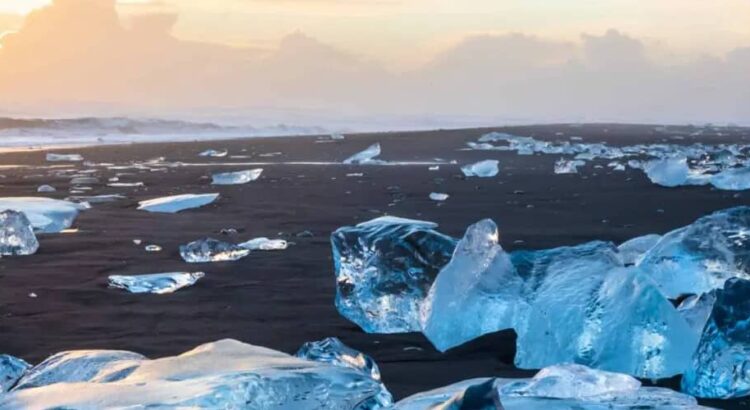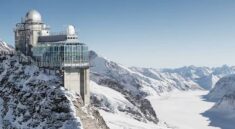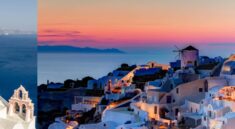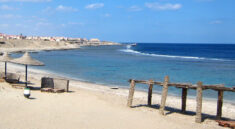Diamond Beach, also known as Jökulsárlón Glacier Lagoon, is a stunning natural attraction located on the southeastern coast of Iceland. It is renowned for its mesmerizing beauty, where chunks of glacial ice from the nearby Jökulsárlón Glacier Lagoon wash ashore, glistening like diamonds on the black volcanic sand.
The beach gets its name from the sparkling ice formations that resemble diamonds scattered across the shoreline. These icebergs, broken off from the glacier and carried by the currents, create a striking contrast against the dark volcanic sand, creating a magical and surreal atmosphere.
Visiting Diamond Beach allows you to witness the power and beauty of nature firsthand. The crystal-clear ice formations come in various shapes, sizes, and shades of blue, creating a captivating sight for photographers and nature enthusiasts. The constantly shifting ice sculptures and the crashing waves provide a dynamic and ever-changing landscape.
Diamond Beach is often visited in combination with the nearby Jökulsárlón Glacier Lagoon, which is a glacial lake dotted with floating icebergs. The icebergs gradually make their way from the lagoon to the beach through a short river, making the beach a fascinating extension of the lagoon experience.
While exploring Diamond Beach, it’s important to exercise caution and stay at a safe distance from the water and floating ice. The powerful waves and unpredictable currents can make the area dangerous. However, taking in the breathtaking scenery, listening to the crashing waves, and witnessing the sparkling icebergs on the black sand is an unforgettable experience.
Diamond Beach is accessible year-round, but the appearance of icebergs and their density on the beach can vary depending on the season and weather conditions. It is a must-visit destination for nature lovers, photographers, and anyone seeking to marvel at the raw beauty of Iceland’s natural wonders.
How to get there
To get to Diamond Beach in Iceland, you can follow these general guidelines:
- Fly to Iceland: The main international airport in Iceland is Keflavík International Airport (KEF), located near the capital city of Reykjavík. Numerous airlines operate flights to and from major cities around the world.
- Rent a Car: Renting a car is the most convenient way to reach Diamond Beach. From Keflavík International Airport, you can rent a car and embark on a road trip to the southeastern part of Iceland. The journey takes approximately 4-5 hours, depending on the weather and road conditions.
- Route Options: There are two main routes to reach Diamond Beach from Reykjavík:
- Option 1: Take the Ring Road (Route 1) eastward from Reykjavík. Drive along the Ring Road, passing through scenic landscapes, small towns, and attractions like Vatnajökull National Park and Jökulsárlón Glacier Lagoon. Diamond Beach is located near the lagoon.
- Option 2: Take the Ring Road (Route 1) eastward from Reykjavík. Once you reach the town of Höfn, take Route 1A southward towards Jökulsárlón Glacier Lagoon. Diamond Beach is located adjacent to the lagoon.
- Guided Tours: If you prefer not to drive or want a guided experience, you can join organized tours that include transportation to Diamond Beach and other nearby attractions. These tours are available from Reykjavík and other major towns in Iceland.
It’s important to note that road conditions in Iceland can vary, especially during winter. It’s advisable to check weather and road conditions before embarking on your journey. Also, keep in mind that the weather can be unpredictable in Iceland, so be prepared with appropriate clothing, including warm layers, waterproof gear, and sturdy footwear.
Once you arrive at Diamond Beach, parking facilities are available nearby. Remember to follow any safety guidelines and respect the environment while visiting this natural wonder.
Things to do
There are several things you can do to make the most of your experience. Here are some suggestions:
- Explore Diamond Beach: Take a leisurely stroll along the shoreline and explore the beach itself. Marvel at the glistening icebergs that have washed ashore and admire their unique shapes, sizes, and shades of blue. Take your time to appreciate the contrast between the sparkling ice and the black volcanic sand.
- Visit Jökulsárlón Glacier Lagoon: Adjacent to Diamond Beach is the Jökulsárlón Glacier Lagoon, which is equally captivating. Take a boat tour or a guided Zodiac tour to navigate among the floating icebergs and get up close to the glacier. The lagoon offers incredible photo opportunities and a chance to witness the ever-changing ice formations.
- Spot Wildlife: Keep an eye out for wildlife in the area. Seals are known to frequent the Jökulsárlón Glacier Lagoon, so you may be able to catch a glimpse of them swimming or lounging on the icebergs. Birdwatchers can also enjoy spotting various bird species, including Arctic terns and skuas.
- Photography: Diamond Beach provides an excellent setting for photography enthusiasts. Capture the natural beauty of the icebergs against the contrasting black sand, experiment with different angles and compositions, and capture the ever-changing light conditions. Sunrise and sunset are particularly magical times for photography at Diamond Beach.
- Take a Glacier Hike: If you’re up for an adventure, consider joining a guided glacier hike on the nearby Vatnajökull Glacier. Explore the icy landscape, learn about the glacier’s features, and experience the thrill of walking on ancient ice formations. Make sure to book a tour with a reputable guide who can provide the necessary equipment and ensure safety.
- Visit Nearby Attractions: Diamond Beach is located in a region rich in natural wonders. Consider exploring other nearby attractions such as Svartifoss Waterfall, Skaftafell Nature Reserve, and the Fjallsárlón Glacier Lagoon. These attractions offer additional opportunities for hiking, sightseeing, and experiencing Iceland’s unique landscapes.
Remember to dress warmly and wear appropriate footwear when visiting Diamond Beach, as the weather can be unpredictable and conditions can be chilly, especially near the glacier. It’s also important to respect the environment and adhere to any safety guidelines to ensure a positive and sustainable experience.
Things not to forget
Warm Clothing, Camera and Accessories, Tripod, Waterproof Bag or Case, Binoculars, Binoculars, Cash and Card, Travel Insurance, Maps and Guidebooks by remembering these items, you’ll be well-prepared for your visit to Diamond Beach and can fully immerse yourself in the beauty of this remarkable natural wonder in Iceland.
Best time to visit
While summer is generally the best time to visit Diamond Beach, it’s worth noting that it is also the peak tourist season in Iceland. The popular attractions, including Diamond Beach and the nearby Jökulsárlón Glacier Lagoon, can be more crowded during this time. To avoid the largest crowds, consider visiting early in the morning or later in the evening.
If you prefer to experience fewer crowds and don’t mind colder temperatures, visiting Diamond Beach during the shoulder seasons of spring (April to May) and autumn (September to October) can also be a good option. The weather is still relatively mild, and the landscapes offer a different charm with the changing colors of vegetation and potential Northern Lights sightings in the autumn.
It’s important to note that weather conditions in Iceland can be unpredictable, and it’s always advisable to check the weather forecast and road conditions before your visit. Regardless of the time of year, Diamond Beach is a captivating destination that showcases the unique natural beauty of Iceland’s glacial landscapes.
Image credits: e498rczdjg6.exactdn.com
Is glacier lagoon and Diamond Beach the same?
No, the Glacier Lagoon and Diamond Beach are not the same, but they are adjacent attractions located in the same region in Iceland. The Glacier Lagoon, known as Jökulsárlón, is a picturesque glacial lagoon with floating icebergs from the nearby glacier. Diamond Beach, on the other hand, is a nearby black sand beach where some of these icebergs wash ashore, creating a striking contrast between the dark sand and the glistening ice, often resembling diamonds. While they are separate locations, they are commonly visited together by tourists exploring the stunning natural beauty of Iceland’s southeastern region.
Is Jökulsárlón Glacier Lagoon worth it?
Yes, Jökulsárlón Glacier Lagoon is widely considered to be worth a visit for travelers exploring Iceland. It is renowned for its breathtaking natural beauty and unique features, making it one of the country’s top attractions. Here are some reasons why Jökulsárlón Glacier Lagoon is worth a visit:
- Stunning Scenery: The lagoon features crystal-clear, ice-blue waters and an otherworldly landscape of floating icebergs. The contrast between the ice and the surrounding mountains creates a surreal and mesmerizing atmosphere.
- Boat Tours: Visitors can take guided boat tours on the lagoon to get up close to the icebergs. These tours provide a unique perspective and the opportunity to learn about the glacial environment.
- Photography: Jökulsárlón is a paradise for photographers. The ever-changing ice formations, reflections in the water, and the play of light make it an ideal location for capturing stunning images.
- Wildlife: The lagoon and its surroundings are home to various bird species, seals, and occasionally, visitors might spot seals lounging on the icebergs or swimming in the lagoon.
- Diamond Beach: As mentioned earlier, Diamond Beach is located nearby, offering a striking contrast between the black sand and glistening icebergs that have washed ashore. It’s an excellent spot for photography and taking in the beauty of nature.
- Accessibility: Jökulsárlón is located along the Ring Road in Iceland’s southeastern region, making it relatively accessible for travelers exploring the country’s famous Golden Circle or the South Coast.
- Natural Phenomena: Depending on the season, visitors might witness the Northern Lights (Aurora Borealis) in the vicinity of the lagoon during the winter months.
Overall, Jökulsárlón Glacier Lagoon is celebrated for its natural beauty, serene atmosphere, and the opportunity to witness the majestic power of glaciers. It’s a must-visit destination for those looking to immerse themselves in Iceland’s stunning landscapes.
Which glacier is better in Iceland?
The choice of which glacier is “better” in Iceland depends on your interests and preferences. Here’s a brief overview of some notable glaciers in Iceland:
- Vatnajökull Glacier: Vatnajökull is the largest glacier in Iceland and offers a wide range of experiences, including ice caves, glacial lagoons (such as Jökulsárlón), and opportunities for glacier hiking and ice climbing.
- Sólheimajökull Glacier: Easily accessible from Reykjavik, Sólheimajökull is known for its dramatic ice formations and crevasses. It’s a popular choice for glacier hikes and ice climbing.
- Langjökull Glacier: Located in the Highlands of Iceland, Langjökull offers unique ice tunnels that allow visitors to explore the glacier’s interior. Snowmobile tours are also available during the winter.
- Snæfellsjökull Glacier: Located on the Snæfellsnes Peninsula, Snæfellsjökull is famous for its association with Jules Verne’s novel “Journey to the Center of the Earth.” It’s a popular destination for glacier hiking with stunning coastal views.
- Hofsjökull Glacier: One of the least-visited glaciers, Hofsjökull offers remote and pristine glacier experiences. It’s situated in the Highlands of Iceland.
The “best” glacier depends on your interests and the experiences you’re seeking. If you’re interested in ice caves, Vatnajökull is a top choice. For easily accessible glacier experiences from Reykjavik, consider Sólheimajökull. Snæfellsjökull offers a unique coastal setting, while Langjökull features ice tunnels. Ultimately, all of Iceland’s glaciers are unique and offer their own natural wonders, so the best one for you depends on your preferences and travel plans.
Is Diamond Beach in Iceland worth it?
Yes, Diamond Beach in Iceland is widely considered worth a visit for travelers exploring the country. Here’s why:
- Unique Natural Beauty: Diamond Beach is known for its stunning contrast between the black sand beach and the glistening icebergs that have washed ashore from the nearby Jökulsárlón Glacier Lagoon. This striking visual contrast creates a unique and breathtaking landscape.
- Photography: The beach offers fantastic photography opportunities, making it a favorite spot for photographers. The interplay of light, ice, and the black sand creates captivating and dramatic images.
- Proximity to Jökulsárlón: Diamond Beach is located just across the Ring Road from Jökulsárlón Glacier Lagoon. Visitors often combine visits to both sites, allowing them to experience the beauty of the lagoon and the beach in a single trip.
- Natural Phenomena: Depending on the season, visitors might have the chance to see the Northern Lights (Aurora Borealis) in the vicinity of Diamond Beach during the winter months.
- Accessibility: The beach is relatively easy to access, as it’s located along the Ring Road in Iceland’s southeastern region, making it convenient for travelers exploring the South Coast or the famous Golden Circle.
Overall, Diamond Beach is celebrated for its natural wonder and dramatic scenery, making it a must-visit destination for those looking to immerse themselves in Iceland’s unique landscapes.
Is Diamond Beach worth the drive?
Yes, Diamond Beach in Iceland is often considered worth the drive for travelers exploring the country. The beach’s stunning contrast between black sand and glistening icebergs, its excellent photography opportunities, and its proximity to the Jökulsárlón Glacier Lagoon make it a captivating and worthwhile destination, especially for those interested in experiencing Iceland’s natural beauty and unique landscapes.
Can you swim in Jökulsárlón Glacier Lagoon?
Swimming in Jökulsárlón Glacier Lagoon in Iceland is not recommended, and it is generally discouraged due to several safety and environmental factors:
- Cold Water: The water in Jökulsárlón is extremely cold, even during the summer months. It is glacial meltwater, and temperatures can be near freezing, posing a significant risk of hypothermia and cold shock if you were to enter the water.
- Strong Currents: The lagoon is affected by strong tidal currents, and the water can flow rapidly toward the nearby ocean. Swimming in such conditions can be hazardous and difficult to control.
- Icebergs: The lagoon is filled with icebergs of various sizes, and these icebergs can shift and move suddenly, creating additional dangers for swimmers.
- Environmental Conservation: Jökulsárlón is a protected natural area, and swimming in the lagoon can have negative impacts on the fragile ecosystem and water quality. It’s important to respect the environment and adhere to conservation guidelines.
If you wish to experience the beauty of Jökulsárlón Glacier Lagoon, it is recommended to do so from the shore or by taking one of the guided boat tours that operate on the lagoon. These tours provide a safe and informative way to get up close to the icebergs and enjoy the natural wonder of the lagoon while following safety precautions.





